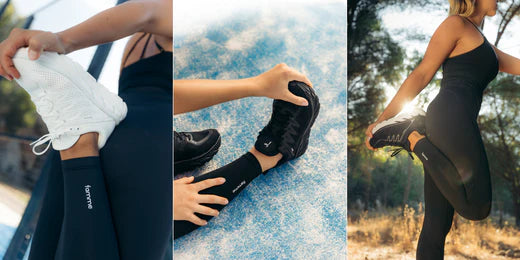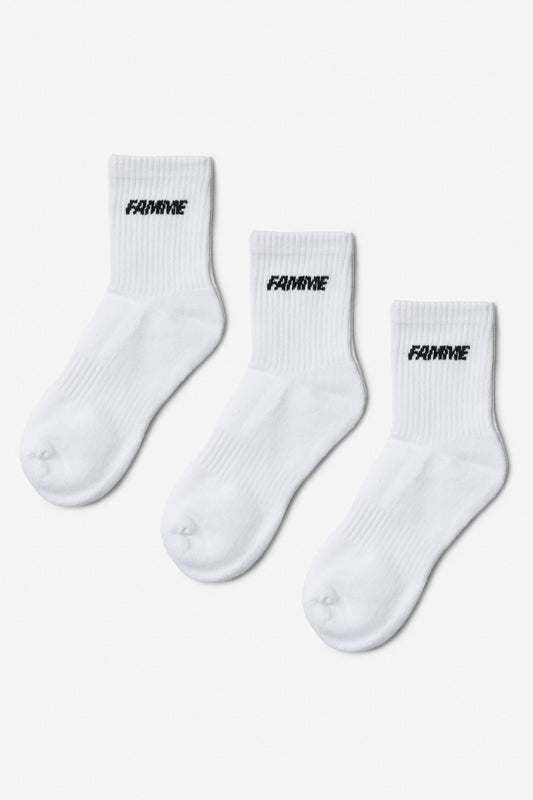
What are pronation, underpronation, and overpronation?
Pronation
Our body has its own system designed to absorb shock, and it is called pronation. It is a rolling motion that occurs when we place our foot down on the ground, typically starting on the outside of the heel before rolling toward the big toe. It is an important function that helps distribute the load that the foot is subjected to.
Whether we overpronate or oversupinate is generally something we are born with, and it is important to remember that it is completely natural. For some reason, some people are born stronger in certain areas than others, which can lead to problems. You can develop injuries if you wear the wrong footwear for your type of pronation. One way to find the right footwear is to try different shoes and feel what is most comfortable for your feet.
Overpronation
With overpronation, you will notice that the inside of your foot at the ankle moves inward when you walk or run. However, when you are sitting relaxed, the overpronated foot looks completely normal.
In other words, you only see a change in the foot when it is under load, and the condition of the foot does not change much when there is support under the foot, such as carpets. The problem with overpronation is the time the foot spends in the pronation movement and how deep it goes; it prevents the foot from moving on to supination.
Every step we take with overpronation creates an imbalance in the body, which can lead to excessive wear on tendons, joints, muscles, and ligaments.
Typical symptoms of overpronation include:
- Plantar fasciitis / heel spur
- Achilles tendinitis
- Foot sole pain
- Back pain
- Shin splints
- Knee pain
How you can check at home if you have overpronation will be explained later in the article.
Underpronation
With underpronation, your feet may be stiff and have a high arch and arch. In some cases, only the heel and toes may touch the ground. The load is therefore greater compared to normal pronation. People with underpronation need good shock absorption to avoid injuries.
The cause of underpronation is often congenital, but it can also result from weakness in certain muscles in the foot, ankle, or leg, which may be caused by:
- Incorrect footwear
- Misalignment in the body
- An injury to the foot that has caused problems with muscles or tendons
A foot with excessive supination cannot adapt to the surface, and the muscles around the foot must work harder to maintain balance. This creates tension in the body, including the calves, knees, hips, and back, which can lead to injuries.
Just like with overpronation, underpronation can be noticed when the foot is under load. Unlike overpronation, the foot will angle outward in underpronation.
What you can do yourself:
- Use shoes with extra shock absorption and possibly extra support in the arch.
- Avoid shoes with high heels or thin soles. If you have thin soles, consider buying an insole for extra support.
- Avoid walking and running on hard surfaces like concrete, as your feet do better on softer surfaces.
How to check it yourself
Guidance for overpronation:
A quick way to see if you overpronate is to check the wear on your shoes. If most wear is on the inside of the sole near the heel and big toe, you may have overpronation.
The next step is to take off your socks and check your feet. Do you have a low arch or flat feet? This could be a sign of overpronation.
Guidance for underpronation:
You can also check your shoes for wear. With normal wear, it starts on the outside of the heel and moves inward toward the middle of the sole. If there is most wear on the outside, you may have underpronation.
Next, take off your socks and wet your feet. Step onto a surface where you can see your footprint. If very little of the arch is visible, you probably have underpronation.
Running shoes and overpronation
Individuals with overpronation will prefer shoes with good shock absorption and support to counteract excessive strain and prevent injuries. Our running shoes are equipped with excellent shock absorption and the support your feet need if you overpronate. Check out our running shoes here!
Do you want to read more about training shoes? See our article on how to find the right shoes!


